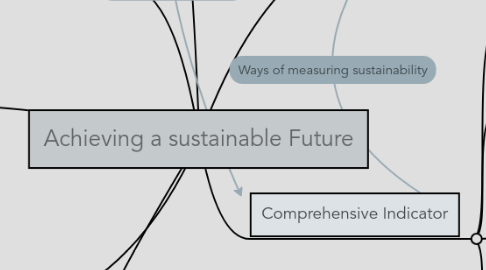
1. Bellagio Principal
1.1. A set of guidelines established in 1996 to asses the accuracy of measures of sustainable development
2. Extended Producer Responsibility
2.1. A corporate and public policy in which a producer is deemed responsible for their product throughout its lifetime as well as its consumer
2.2. If a company produces a styrofoam cup, they are responsible for the environmental impacts it has and so is its consumer
3. Green Taxation
3.1. Taxation imposed to encourage environmentally responsible behavior
3.2. An example would be an extra tax on fossil fuels
4. Slow Cities
4.1. Cities that protect and encourage local traditions and develop an economy based on it's unique nature instead of joining the globalized world
4.2. Positano, Italy is a slow city
4.3. Slow cities might ban fast-food restaurants or neon signs
5. Smart Growth
5.1. Economic growth that occurs while sustainability is maintained
6. Specific Indicator
6.1. A single measure that shows progress towards sustainability
6.2. Living Planet Index
6.2.1. A measurement created by the WWF that measures the state of the world's biodiversity in various ecosystems
7. Comprehensive Indicator
7.1. A measure that shows overall progress towards sustainability
7.2. Genuine Program Indicator
7.2.1. Measurement that that addresses the shortcomings of the GDP by assigning a positive dollar value to all activities that poitively contribute to society's quality of life and a negative dollar value to activities that have a negative impact on the quality of life
7.3. Index of Sustainable Economic Welfare (ISEW)
7.3.1. alternative measure to GDP that measures economic progress by negative and positive actions done for society
7.3.2. The cost of child care is added to the index while the costs of air pollution are subtracted
7.4. Ecological Footprint
7.4.1. A measure of sustainability in which n area of land is used to demonstrate the ecological pressure created by someone
7.4.2. The food we eat, the clothing we wear, and our houses are some of the things that contribute to our footprint
7.4.3. Fair Earthshare
7.4.3.1. The amount of land available to support each person on earth if all the productive land was was divided evenly among them

